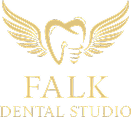
Orthodontics
More Than Just an Aesthetic Concern
Orthodontics is not only important for creating an aesthetically pleasing smile; it also has significant health implications.
Teeth that are malpositioned or overlapping are more difficult to clean properly during daily oral care, making them more susceptible to decay and damage than properly aligned teeth.
At our clinic, we provide orthodontic solutions for both children and adults. First and foremost, consult with a specialist to develop the most appropriate treatment plan tailored to your teeth and expectations.
Why Might Orthodontic Treatment Be Necessary?
There are several reasons, the most common being:
- improving the harmony of the face and teeth
- improving the health of teeth and gums
- restoring proper masticatory (chewing) function
Orthodontic treatment is most often required when teeth are irregularly positioned, or when the patient wishes to prevent future health issues. The primary aim of orthodontics is the correction of dental and jaw irregularities.
During treatment, the goals include correction of:
- dental crowding
- spacing between teeth
- proclination or retroclination of teeth
- positional and morphological abnormalities
- open bite and deep bite
- malocclusions
Timely orthodontic treatment can prevent many unpleasant and harmful conditions, making it a highly worthwhile long-term investment.cél. Az időben elvégzett fogszabályozással egy sor kellemetlen és egészségkárosító állapot előzhető meg, így ez a kezelés hosszú távon igen megtérülő befektetésnek bizonyul.
Trust Our 15 Years of Professional Experience!
What Will Happen During Your Visit?
- After the initial consultation, a radiograph (X-ray) is taken to obtain a clear picture of the current situation.
- An impression of your dentition is also made, providing an even more precise model.
- Using these, we design the most effective orthodontic appliance for your case. There are several types of appliances available, from which you will be able to choose.
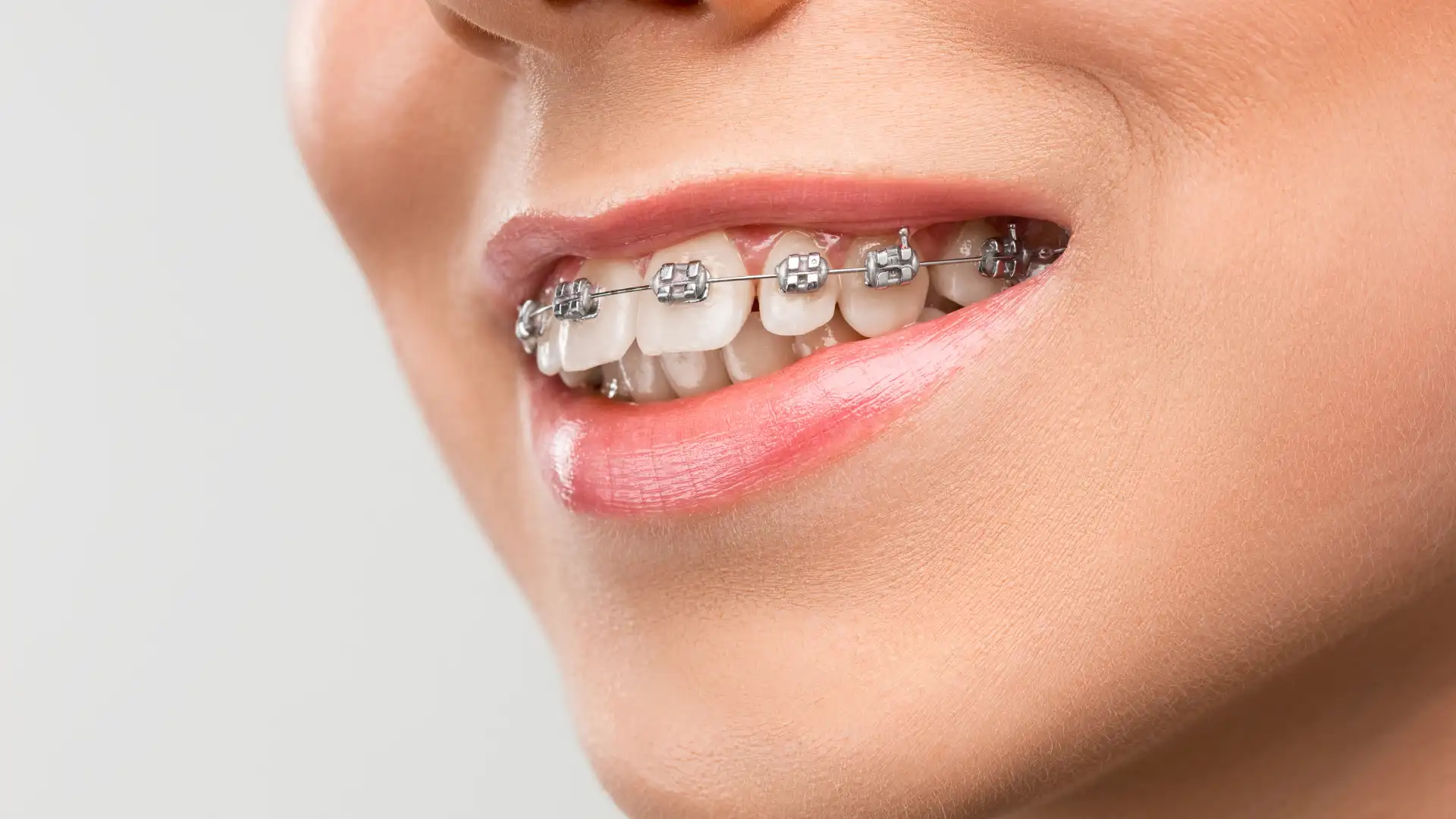
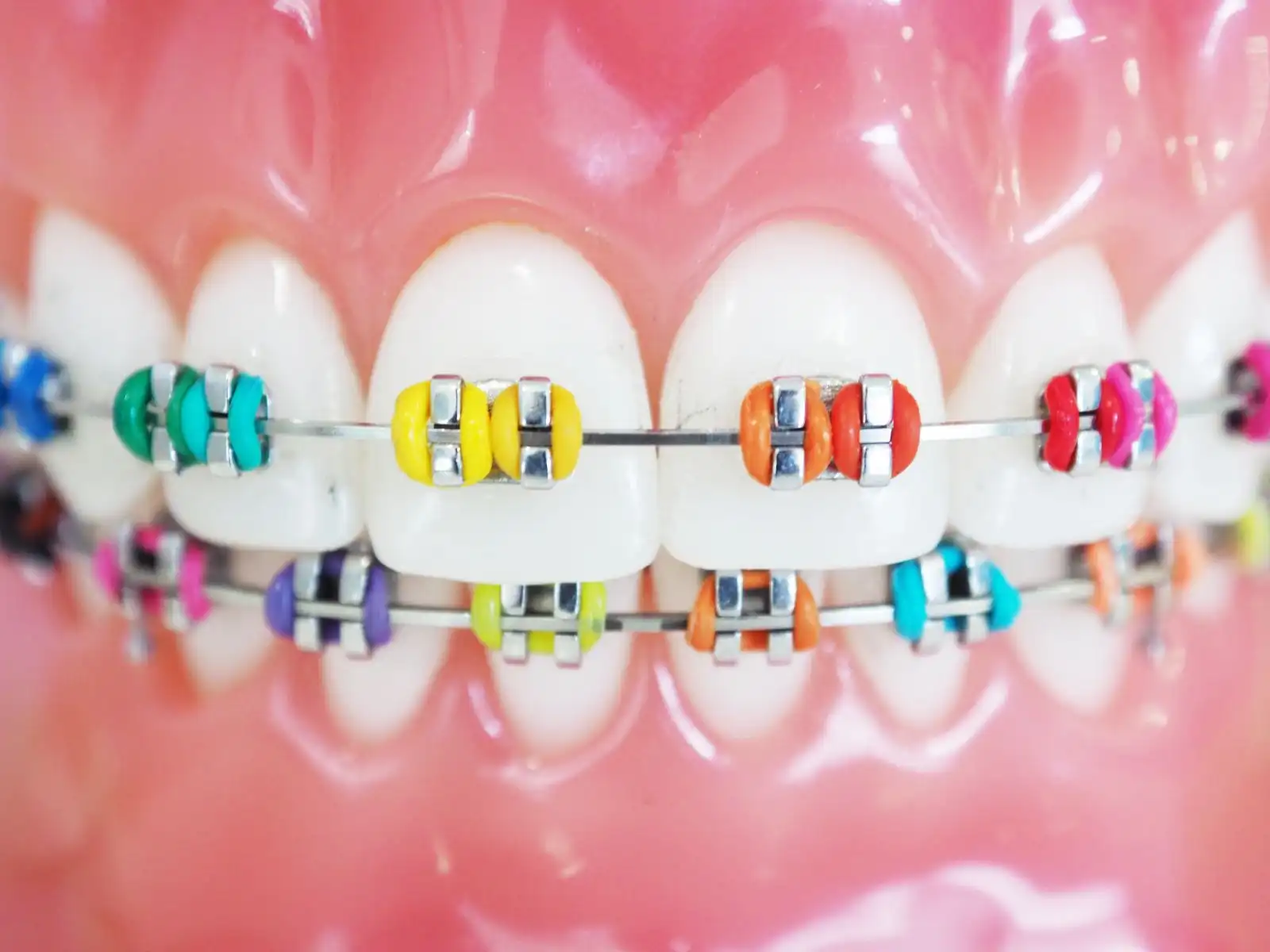
When Is the Best Time to Begin Orthodontic Treatment?
The ideal time to start orthodontics is during a child’s growth period, when the jaws are still developing. Treatment is less commonly recommended under age 7, as permanent teeth are not yet present and primary teeth primarily prepare the gums for permanent dentition.
From around age 2, treatment may be indicated in cases of open bite. Between ages 6 and 12, when both primary and permanent teeth are present (the mixed dentition period), it may be necessary to treat crossbites and other malocclusions. Most anomalies can be effectively managed during this age range.
After age 12, when only permanent teeth are present, treatment usually requires fixed appliances, and in severe cases, surgical intervention may also be necessary.
There is essentially no upper age limit for orthodontics, since bone remodeling capacity remains throughout life. Malpositioned teeth can be aligned at any age, although treatment generally takes longer in adults than in younger patients.
Types of Orthodontic Appliances
Removable appliances
- Can be taken out at any time during treatment.
- Less visually intrusive than fixed appliances.
- Typically worn at night or afternoons for 12–14 hours daily.
- Because they are not worn continuously, treatment time is longer.
- Can be used on both upper and lower arches, but not suitable for all malocclusions.
- Usually recommended for girls aged 10–14 and boys aged 12–15; afterwards, fixed appliances are more commonly used.
Fixed appliances (braces)
- The oldest and most widely used orthodontic systems.
- Brackets are bonded directly to the teeth, and the appliance is worn 24/7, making treatment more efficient and shorter in duration.
- Allow tooth movements that removable appliances cannot achieve.
- Main disadvantage: increased risk of caries due to more challenging oral hygiene. With excellent oral care, this risk can be minimized.
- A funkciós készülékek esetén a készülék által aktivált izomerő adja a fog elmozdításához szükséges erőt. Feladata tehát elsősorban az, hogy fokozza és megváltoztassa az izomműködést, és így helyes irányba befolyásolja az állcsontok és a fogazat növekedését.
Aesthetic appliances
Modern technology has greatly expanded aesthetic options:
- Clear aligners (invisible removable orthodontics): transparent plastic trays suitable for correcting mild crowding in adults. They are removable, easy to clean, and discreet, but unsuitable for major corrections.
- Lingual braces (invisible fixed orthodontics): attached to the inner (lingual) surface of the teeth, making them invisible from the outside. Effective for a wide range of malocclusions.
- Ceramic or porcelain brackets: less noticeable than metal brackets. Some systems use tooth-colored coated archwires or even sapphire crystal brackets, which are completely transparent.
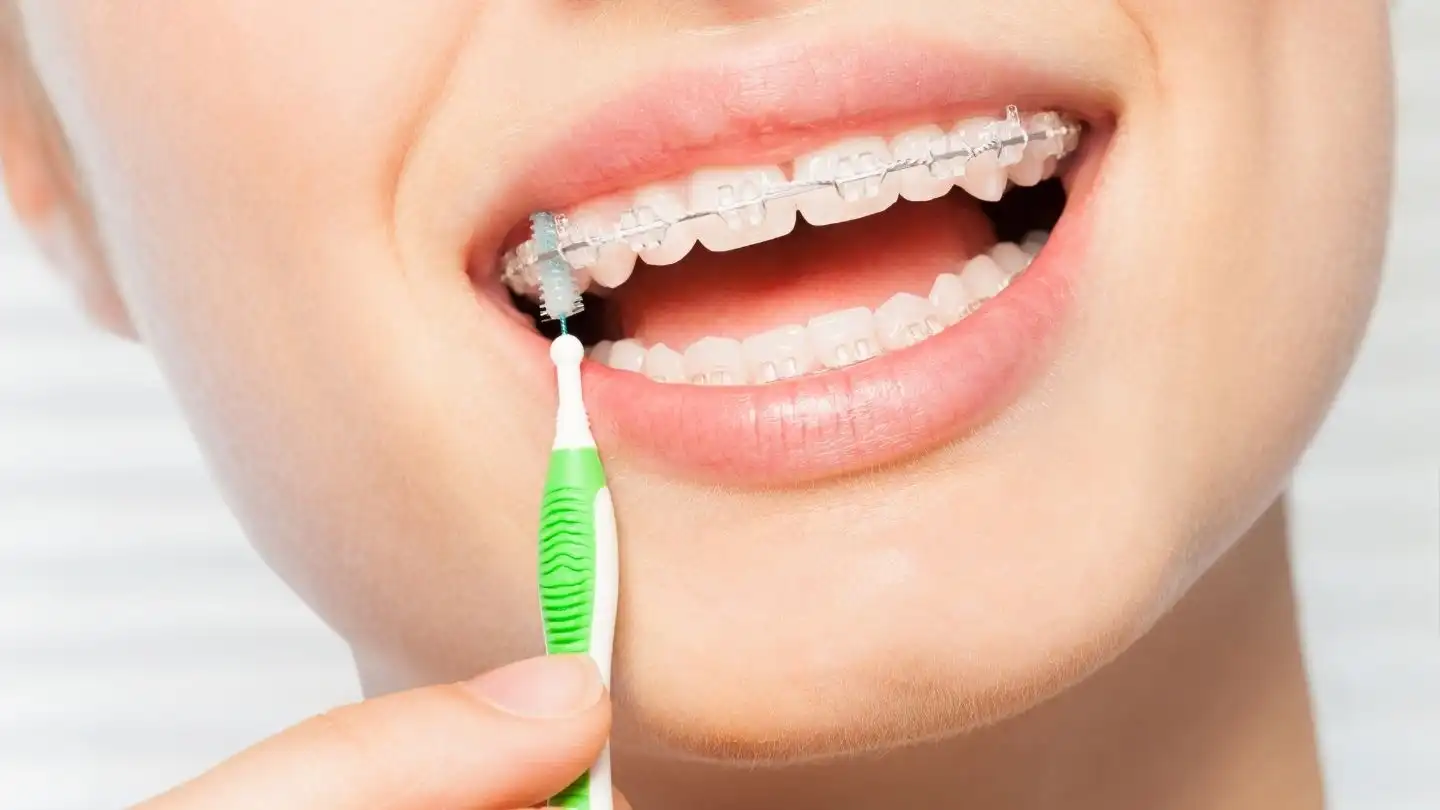
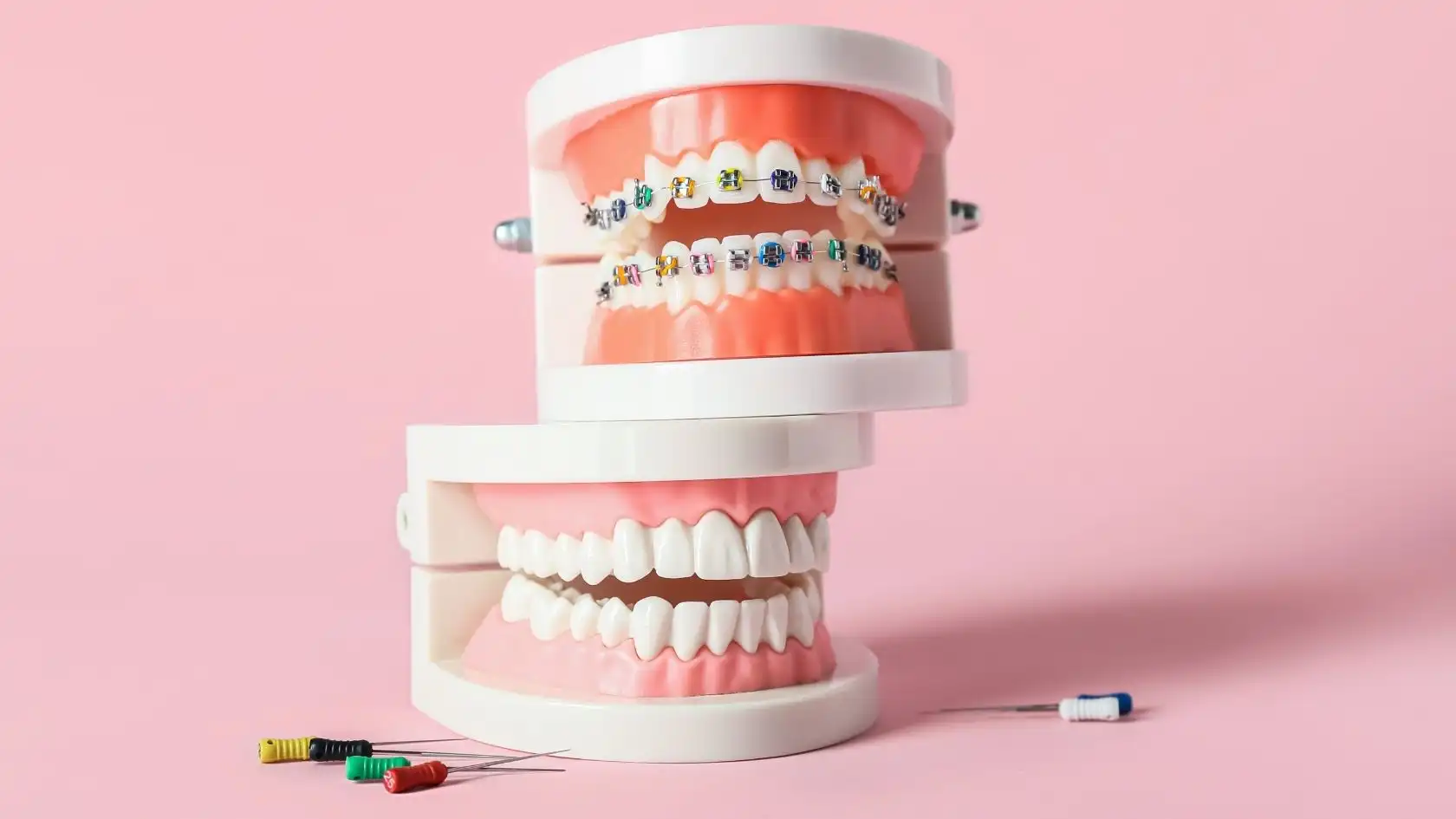
How Long Must Orthodontic Appliances Be Worn?
Treatment duration depends on the type of malocclusion and the patient’s age at the start of treatment. Since orthodontic therapy requires complete bone remodeling around the teeth, treatment often lasts a long time—commonly 18–24 months, and sometimes several years.
Factors influencing duration:
- Adult treatment: typically 12–18 months, though it may vary widely depending on the severity of the malocclusion..
- Earlier diagnosis and treatment (during childhood) usually require less time.
- Genetic and anatomical factors also play a role.
- Removable appliances: usually 2–5 years.
- Fixed appliances: generally 12–24 months.
On the Success of Orthodontic Treatment
Successful orthodontic treatment requires patient cooperation. Following all the orthodontist’s instructions is essential. Proper oral hygiene during orthodontics is crucial; without it, severe gingivitis may develop, which is not only painful and requires treatment, but can also compromise treatment results. Orthodontic appliances themselves increase the risk of plaque accumulation.
To avoid this, teeth and appliances must be cleaned thoroughly and consistently, exactly as instructed by the specialist. Use special orthodontic toothbrushes, dental floss, and interdental brushes to help maintain oral hygiene.
If you wear a removable appliance, it can be cleaned with a toothbrush, toothpaste, and special cleansing tablets.
